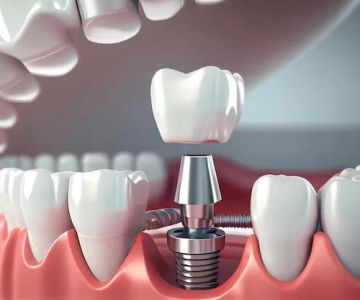
What is Sinus Lift Surgery for Dental Implants? Understanding the Procedure and Benefits
- What is Sinus Lift Surgery?
- Why is Sinus Lift Surgery Needed for Dental Implants?
- The Sinus Lift Surgery Procedure
- The Benefits of Sinus Lift Surgery for Dental Implants
- Recovery and Aftercare for Sinus Lift Surgery
What is Sinus Lift Surgery?
Sinus lift surgery, also known as sinus augmentation, is a procedure designed to increase the amount of bone in the upper jaw, particularly in the area of the molars and premolars, by lifting the sinus membrane and adding bone graft material. This is typically performed to make space for dental implants when the natural bone is insufficient to support them.
The sinus lift procedure is crucial for patients who want to receive dental implants but have experienced bone loss in the upper jaw, often due to periodontal disease, trauma, or long-term missing teeth. By adding bone in the area, the dentist or oral surgeon creates a stable foundation for the implants.
Why is Sinus Lift Surgery Needed for Dental Implants?
Sinus lift surgery is necessary when there is insufficient bone height in the upper jaw, particularly in the posterior region (back part of the mouth). Over time, the sinuses can expand or become larger, especially if teeth are missing or have been lost for a long time. This can cause the bone to shrink and create a gap between the sinus cavity and the jawbone.
For dental implants to be placed in the upper jaw, there must be enough bone to anchor the implants securely. If the bone has deteriorated or is too thin, sinus lift surgery can help provide the necessary bone height. By lifting the sinus floor and adding bone graft material, this procedure allows for the proper placement of dental implants, which are crucial for restoring lost teeth.
The Sinus Lift Surgery Procedure
Sinus lift surgery is usually performed under local anesthesia, and sometimes with sedation, to ensure that the patient is comfortable throughout the procedure. The surgery typically takes about 1-2 hours, depending on the complexity of the case.
The surgeon begins by making a small incision in the gum tissue in the area where the implant will be placed. Then, the sinus membrane is carefully lifted to create space for the bone graft material. The graft material, which can be synthetic bone, bone from another part of the patient’s body, or cadaver bone, is placed in the newly created space. Afterward, the incision is closed, and the healing process begins.
In some cases, the dentist may place dental implants during the sinus lift surgery. However, in most situations, the bone graft needs time to integrate with the surrounding bone before implants can be placed, requiring a second surgery after several months of healing.
The Benefits of Sinus Lift Surgery for Dental Implants
Sinus lift surgery offers several important benefits for individuals seeking dental implants in the upper jaw. The primary benefit is the ability to receive dental implants when bone loss in the upper jaw would otherwise make them impossible to place.
Here are some key benefits of sinus lift surgery:
- Increased Bone Volume: The procedure allows the bone to regenerate and rebuild, providing a solid foundation for dental implants.
- Improved Implant Success: When adequate bone structure is present, dental implants have a higher success rate, leading to better long-term outcomes.
- Restoration of Natural Function: Sinus lift surgery can restore the ability to chew and speak naturally by allowing the placement of permanent dental implants in the upper jaw.
- Enhanced Aesthetic Results: For patients missing teeth in the back of their upper jaw, sinus lift surgery can improve the appearance of their smile by restoring a full set of teeth.
Overall, this procedure can make dental implants a viable option for many patients who have experienced significant bone loss in the upper jaw.
Recovery and Aftercare for Sinus Lift Surgery
The recovery process after sinus lift surgery is generally straightforward, though it may require some patience. Most patients can return to their daily activities within a few days but should avoid vigorous activities that could disrupt the healing process for several weeks.
Immediately after the surgery, patients may experience mild swelling, bruising, and discomfort, which can be managed with prescribed pain medication. It's essential to follow the surgeon’s aftercare instructions, including avoiding blowing your nose, as this can disrupt the sinus area and delay healing.
For the best outcome, bone grafts need time to integrate with the existing bone, which typically takes 4-6 months. After this time, a follow-up appointment will determine if the bone is ready for the placement of dental implants.
In some cases, patients may need to attend multiple follow-up visits to ensure the healing process is progressing well. After successful healing, the dental implants can be placed, restoring both function and aesthetics to the patient's smile.







 Los Coyotes Imaging Center: Le Hanh N DDS5.0 (2 review)
Los Coyotes Imaging Center: Le Hanh N DDS5.0 (2 review) Gentle Dental West Roxbury4.0 (285 review)
Gentle Dental West Roxbury4.0 (285 review) Aspen Dental - Lees Summit, MO4.0 (592 review)
Aspen Dental - Lees Summit, MO4.0 (592 review) Whitman Dental Center4.0 (1018 review)
Whitman Dental Center4.0 (1018 review) Charleston Smiles Dentistry4.0 (194 review)
Charleston Smiles Dentistry4.0 (194 review) Crestlake Dental Care4.0 (13 review)
Crestlake Dental Care4.0 (13 review) The Importance of Oral Health Education During Pregnancy for a Healthy Pregnancy
The Importance of Oral Health Education During Pregnancy for a Healthy Pregnancy Best Tips for Brushing Your Teeth Properly for Healthy Gums: Essential Techniques for Oral Health
Best Tips for Brushing Your Teeth Properly for Healthy Gums: Essential Techniques for Oral Health Why Skipping Dental Checkups Can Lead to Bigger Oral Health Problems
Why Skipping Dental Checkups Can Lead to Bigger Oral Health Problems Advantages of Porcelain Dental Restorations
Advantages of Porcelain Dental Restorations How Can Diabetes Cause Tooth and Gum Problems? Preventing and Managing Oral Health Issues
How Can Diabetes Cause Tooth and Gum Problems? Preventing and Managing Oral Health Issues Healthy Habits for Promoting Good Oral Health and Hygiene: Tips for a Healthy Smile
Healthy Habits for Promoting Good Oral Health and Hygiene: Tips for a Healthy Smile